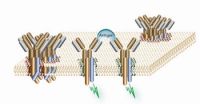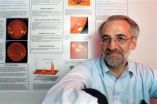(Press-News.org) Fish byproducts may be a new source of fish feed, thanks to research by U.S. Department of Agriculture (USDA)-funded scientists in Hawaii.
Research scientist Dong-Fang Deng and her colleagues with the Oceanic Institute in Waimanalo, Hawaii, are collaborating with USDA food technologist Peter Bechtel to develop the new fish feeds. Bechtel is with the USDA Agricultural Research Service (ARS) Subarctic Agricultural Research Unit in Kodiak, Alaska. ARS is the USDA's principal intramural scientific research agency.
The scientists are taking fish parts that would normally be discarded-head, tail, bone, skin and internal organs-and fashioning them into feeds for shrimp and fish. They are currently testing the feeds on Pacific threadfin (Polydactylus sexfilis)-or "moi" as Hawaiians call it-and Pacific white shrimp (Litopenaeus vannamei).
The researchers then characterize the nutrient composition of the feeds, evaluate their ability to attract the shrimp and moi, estimate the food's digestibility and assess the growth of the animals. Recent tests have shown that many of the Alaska fish parts work well as feeding stimulants, which entice the shrimp to eat the plant-protein-based feed to which fish byproducts had been added.
In an earlier ARS-funded study with moi, former Oceanic Institute scientist Ian Forster found that the nutritional quality of feeds made with discarded portions of Alaskan pollock and cod was equivalent to that of feed made from Norwegian fishmeal, generally regarded as the highest standard in the aquaculture feed industry. Forster and his colleagues found the same result when feeds were tested on shrimp.
According to Deng, the scientists are currently examining how to best use fish byproducts to develop practical feeds that are nutritionally balanced, cost effective and safe for the environment.
Details about these feed studies have been published in the Journal of the World Aquaculture Society and the Journal of Aquatic Food Product Technology.
INFORMATION:
Read more about this and other ARS aquaculture research in the October 2010 issue of Agricultural Research magazine.
USDA is an equal opportunity provider, employer and lender. To file a complaint of discrimination, write: USDA, Director, Office of Civil Rights, 1400 Independence Ave., S.W., Washington, D.C. 20250-9410 or call (800) 795-3272 (voice), or (202) 720-6382 (TDD).
New fish feeds made from fish byproducts
2010-10-07
ELSE PRESS RELEASES FROM THIS DATE:
One lock, many keys
2010-10-07
In order to track down pathogens and render them harmless, the immune system must be able to recognize myriad different foreign substances and react to them. Scientists at the Max Planck Institute of Immunobiology and the Centre for Biological Signalling Studies BIOSS at the University of Freiburg have discovered how the immune system's B-cells can be activated by numerous substances from our environment. The receptor molecules on the surface of the B-cells are only activated when the receptor subunits separate following the binding of foreign substances. These findings ...
$5 million NSF grant will upgrade and expand NJIT radio telescope array
2010-10-07
A $5 million National Science Foundation (NSF) grant to upgrade and expand a set of radio frequency antennas at Owens Valley Solar Array (OVSA) http://www.ovsa.njit.edu/ has been awarded to NJIT. The new facility is expected to help scientists better understand the nature of solar flares which greatly interest government, industry and the military.
"Space weather incidents such as coronal mass ejections and solar flares can cause problems with cell phone reception, GPS systems, power grids and other technologies," said NJIT Distinguished Professor Dale Gary, a world-renowned ...
Experts advocate realigning type 2 diabetes treatments with disease's natural history
2010-10-07
Chevy Chase, MD— A new consensus statement published in the September, 2010, issue of The Endocrine Society's Journal of Clinical Endocrinology & Metabolism (JCEM) finds that the increasing recognition that beta-cell failure occurs much earlier and severely than commonly believed suggests that regular glycemia screening, early identification of patients at metabolic risk and prompt and aggressive intervention deserves greater emphasis.
The consensus statement is based on the findings of a working group of basic researchers, clinical endocrinologists and primary care ...
New findings pull back curtain on relationship between iron and Alzheimer's disease
2010-10-07
BETHESDA, Md., Oct. 6, 2010 – Massachusetts General Hospital researchers say they have determined how iron contributes to the production of brain-destroying plaques found in Alzheimer's patients.
The team, whose study results appear in this week's Journal of Biological Chemistry, report that there is a very close link between elevated levels of iron in the brain and the enhanced production of the amyloid precursor protein, which in Alzheimer's disease breaks down into a peptide that makes up the destructive plaques.
Dr. Jack T. Rogers, the head of the hospital's neurochemistry ...
Long-extinct passenger pigeon finds a place in the family tree
2010-10-07
CHAMPAIGN, Ill. — With bits of DNA extracted from century-old museum specimens, researchers have found a place for the extinct passenger pigeon in the family tree of pigeons and doves, identifying for the first time this unique bird's closest living avian relatives.
The new analysis, which appears this month in Molecular Phylogenetics and Evolution, reveals that the passenger pigeon was most closely related to other North and South American pigeons, and not to the mourning dove, as was once suspected.
Naturalists have long lamented that one of North America's most ...
Wistar researchers discover new class of objects encoded within the genome
2010-10-07
Despite progress in decoding the genome, scientists estimate that fully 95 percent of our DNA represents dark, unknown territory. In the October 1 issue of the journal Cell researchers at The Wistar Institute shed new light on the genetic unknown with the discovery of the ability of long non-coding RNA (ncRNA) to promote gene expression. The researchers believe these long ncRNA molecules may represent so-called gene enhancer elements—short regions of DNA that can increase gene transcription. While scientists have known about gene enhancers for decades, there has been no ...
UF study: Emotional effects of heavy combat can be lifelong for veterans
2010-10-07
GAINESVILLE, Fla. — The trauma from hard combat can devastate veterans until old age, even as it influences others to be wiser, gentler and more accepting in their twilight years, a new University of Florida study finds.
The findings are ominous with the exposure of today's men and women to heavy combat in the ongoing Iraq and Afghanistan wars on terror at a rate that probably exceeds the length of time for U.S. veterans during World War II, said UF sociologist Monika Ardelt.
"The study shows that we really need to take care of our veterans when they arrive home, because ...
New soy-based natural S-equol supplement reduces menopausal hot flashes, muscle and joint pain in first study among US women
2010-10-07
CHICAGO, IL (Oct. 6, 2010) – A new women’s health, whole soy germ-based nutritional supplement containing Natural S-equol reduced the frequency of moderate to severe hot flashes and reduced muscle and joint pain in the first study of its kind among postmenopausal U.S. women, according to peer-reviewed data presented as a poster presentation at the North American Menopause Society (NAMS) Annual Meeting. Also, the first study to report Natural S-equol contributions to bone health and a study of Natural S-equol safety were presented at NAMS.
“These data from U.S. women ...
Tip sheet: Soy-based natural S-equol supplement data presented from 4 studies at the North American Menopause Society Annual Meeting
2010-10-07
Four clinical studies that add to the evidence about the use of a new nutritional supplement containing the whole soy germ-based ingredient Natural S-equol to improve health were presented at the North American Menopause Society (NAMS) Annual Meeting. These studies include a poster about a first-of-its-kind study in U.S. women that documents the effectiveness of Natural S-equol in reducing the frequency of moderate to severe hot flashes and reducing muscle and joint pain. A second poster reported the first clinical study about Natural S-equol contributions to bone health. ...
Family ties bind desert lizards in social groups
2010-10-07
SANTA CRUZ, CA-- Researchers at the University of California, Santa Cruz, have found that a species of lizard in the Mojave Desert lives in family groups and shows patterns of social behavior more commonly associated with mammals and birds. Their investigation of the formation and stability of family groups in desert night lizards (Xantusia vigilis) provides new insights into the evolution of cooperative behavior.
The researchers reported the results of a five-year study of desert night lizards in a paper published in the Proceedings of the Royal Society B: Biological ...



